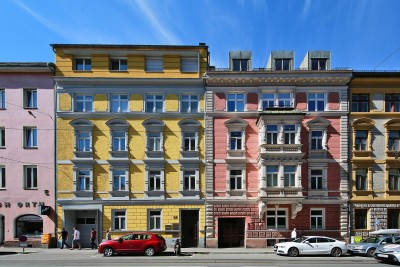The Austrian real estate market remained under pressure in 2024. High inflation, rising interest rates, and stricter lending guidelines meant that many potential buyers hesitated or were unable to access financing in the first place. This led to a slight decline in the transaction volume of real estate purchases by 0.7% to €24.1 billion. In comparison: during the real estate boom in 2021, the transaction volume still reached 43 billion euros.
“The restrictive conditions for loans and the ongoing economic uncertainty have led to a slowdown in the market,” explains a spokesperson for the Compass Group, which carried out an analysis of the market together with the Data Science Service. According to this study, a total of 65,281 purchase contracts were concluded in 2024, which corresponds to a decline of 7.1 percent compared to the previous year.
Regional differences – Vienna defies the downward trend
The development of the real estate market varied from province to province. Styria was hit particularly hard, with transaction volumes falling by 15.5%. In the provincial capital of Graz, the number of apartments sold fell by 22.6% in the first half of 2024. Despite this slump, Styria remains one of the more affordable regions in the country with an average price per square meter of EUR 2,811.
Vienna, on the other hand, proved to be an exception: here, the transaction volume rose by a remarkable 15.9%. Experts attribute this to the continuing high demand for urban living space and the larger number of investors who are keeping the market stable despite the economic challenges. “Especially in urban centers such as Vienna, real estate remains a sought-after form of investment,” says an industry insider.
Private purchases continue to dominate the market
The majority of real estate transactions continued to take place between private individuals. A total of around 11.39 billion euros was invested in such sales. Commercial investments and new construction projects, on the other hand, remained subdued, as property developers often decided against new projects due to the high financing costs.
“The current high construction costs and the restrictive financing environment are significantly hampering new construction projects,” explains an expert from the real estate sector. This could lead to a shortage of supply in the coming years, which in turn would result in price increases.
Looking to the future: hope for recovery in 2025
Despite the challenging situation, there is hope for the Austrian real estate market. Experts are forecasting a slight upturn in 2025, particularly due to possible interest rate cuts and a relaxation of lending guidelines. The European Central Bank (ECB) could lower key interest rates to stimulate the economy, which would also make it easier to buy real estate.
Analysts explain that if interest rates return to a more moderate level, this could stimulate demand again. A certain degree of stabilization can already be seen in some regions. While rural areas and federal states such as Styria are struggling with declines, the Viennese market remains robust.
